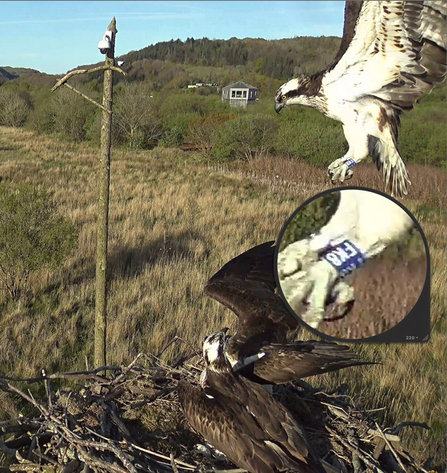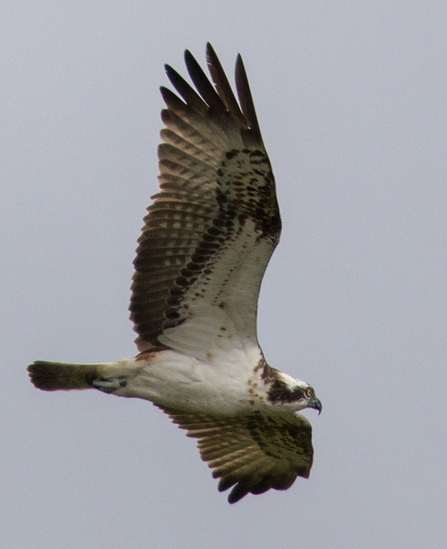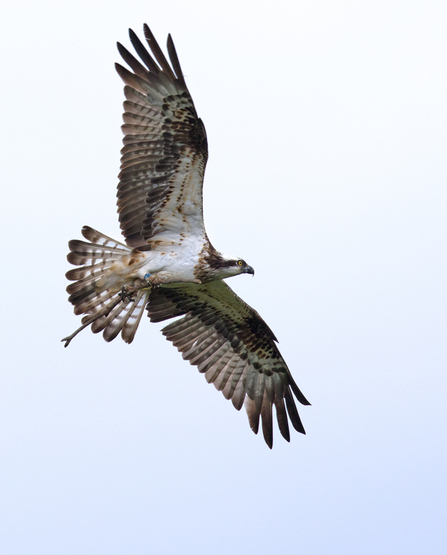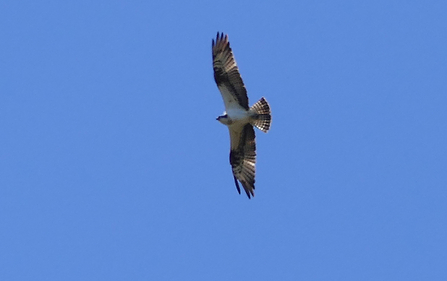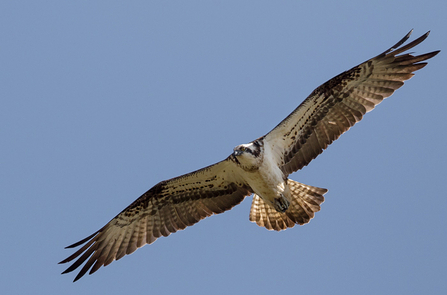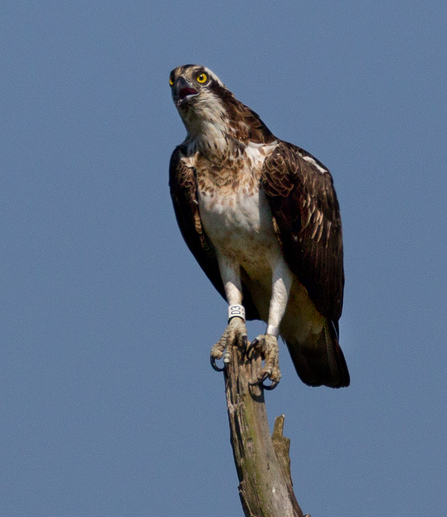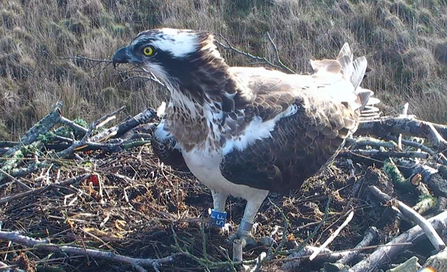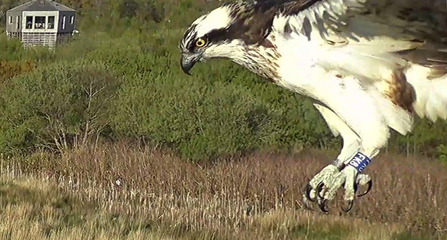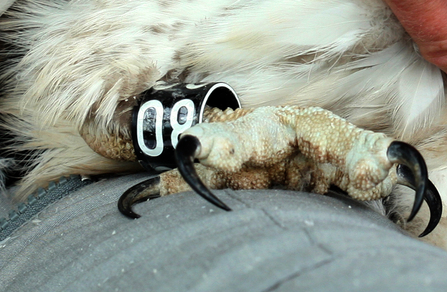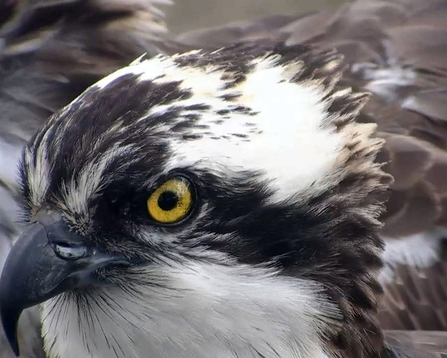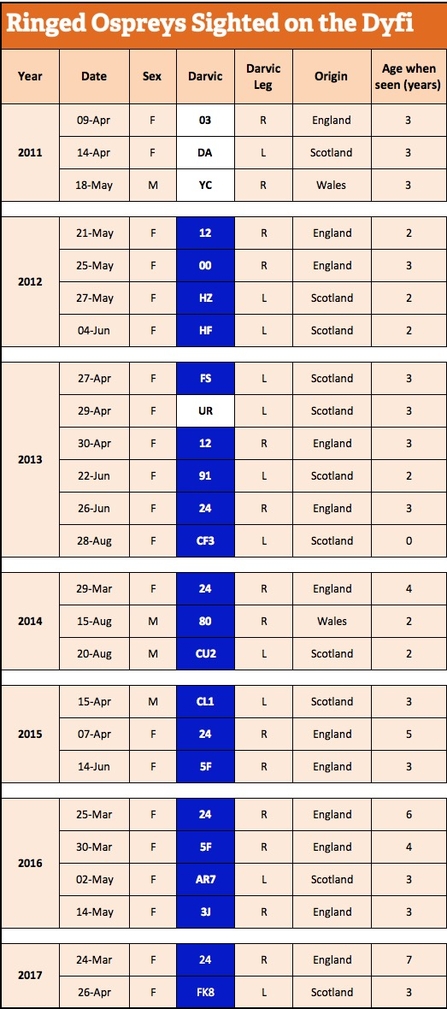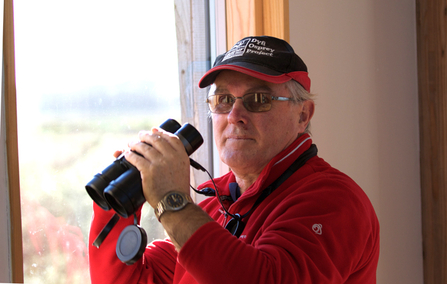INTRUDER!! Who is it please?
You're in the 360 Observatory, Monty and Glesni are mantling and piping out osprey intruder calls quicker than you can prise your binoculars back off your friend's neck, and suddenly you make out a dot in the distance. It's a bird 300 metres away, high up and moving at 30mph.
Can you tell who it is? It has a leg ring - who is it? QUICK - ID it.
At 300m you're doing well to ID a moving bird as an osprey. Forget male or female, no chance. Leg ring? Impossible, you wouldn't see it at that distance even with a £2,000 pair of binoculars.
An osprey needs to fly very close and preferably be photographed to make out a ring number and even then you're at the mercy of good light, good photographic technique, and a willing participant happy not to hide their legs away under a mass of undercarriage feathers. But what if it doesn't have a ring? Half of all UK ospreys don't.
Recognising FK8 as we did on Wednesday evening with a 4K camera shooting at over double the usual frame rate (50fps) is not the norm, we had a bit of luck too - this bird came very close to the nest. But there are other tricks we can use.
A Tweed Valley three-year-old female flies directly over the nest on her migration back from Portugal to Scotland

